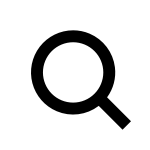L'artiste belge ZERO Jef Verheyen (1932-1984) s'est fait connaître comme le peintre des flux lumineux et des spectres de couleurs. Il expérimente non seulement la lumière, mais aussi le mouvement et l'invisible comme moyen d'évoquer les mécanismes naturels et de révéler les interrelations universelles entre l'être humain et le monde qui l'entoure. Il a utilisé des principes géométriques - sa passion pour la géométrie est née de son intérêt pour les mathématiques et la philosophie (grecque) - comme base de l'harmonie. Verheyen n'a jamais abandonné les supports et matériaux traditionnels tels que la toile, la peinture et les pinceaux pour rechercher l'essence de notre nature.
Jef Verheyen
• 0028 • Espace Découpé - Witte Ruimte, 1957
Jef Verheyen ArchiveVerheyen étend son réseau international à Milan. Lorsqu'il expose à la Galleria Pater en 1958, Piero Manzoni entre avec des peintures blanches sous le bras. Cet événement aiguise la réflexion de Verheyen sur la mono- et l'achromie. Durant cette période, il rédige son manifeste Essentialisme. Ses opinions sont étroitement liées à celles d'artistes tels que Günther Uecker, Otto Piene, Hermann Goepfert, Lucio Fontana et Yves Klein. Par exemple, Klein travaille d'abord avec le blanc chromé avant de travailler avec son célèbre pigment bleu. Dans des lettres, Klein et Verheyen débattent de l'invention et des objectifs de la peinture mono et achrome.
References
Jef Verheyen, Le peintre flamant / Dirk Pörschmann & Tijs Visser. - Brussels : ASA Publishers, 2010. - 256 p. : ill. ; 23 x 23 cm
Jef Verheyen 'Lux est Lex' / Freddy De Vree. - Wijnegem : Axel Vervoordt, 2004. - 160 p. : ill. ; 35 x 28 cm
Retrospectieve Jef Verheyen, 1932-1984 / Willy Van den Bussche & Léonore Verheyen. - Oostende/Brugge : Provinciaal Museum voor Moderne Kunst/Stichting Kunstboek, 1994. - 158 p. : ill. ; 30 x 24.5 cm
Maurice Besset (ed.), La couleur seule. L'Experience du monochrome, exh. cat., Musée Saint Pierre Art Contemporain Lyon (07.10.1988 - 05.12.1988), Lyon: Octobre/Musée Saint Pierre, 1988. - ill., 32,2 x 25,2 cm

